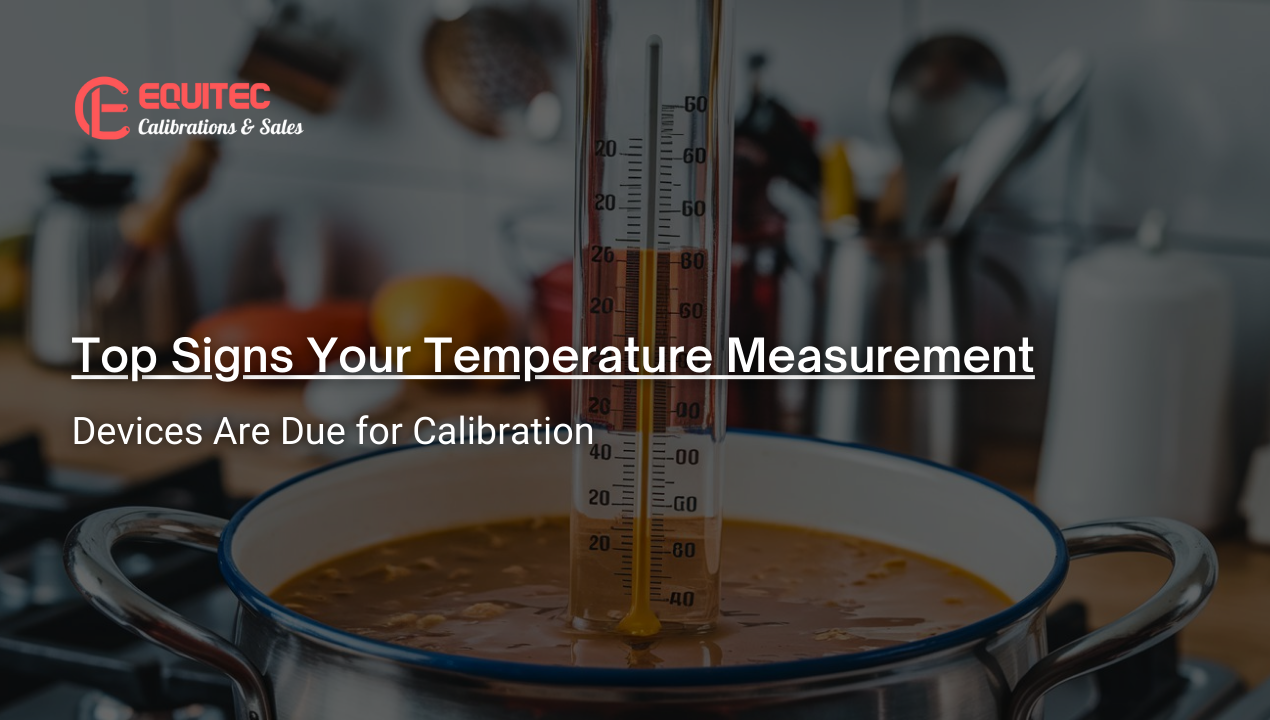In industries where accuracy and measurement matter most, high-quality equipment is the key. It’s often said a scientist or technician is only as good as their tools. So, ensure your instruments are giving you accurate readings that are crucial to your business.
Producing reliable data is critical for instruments. Especially in industries such as healthcare, manufacturing, and more, where precision is everything. That’s where calibration comes in. But what is calibration? Calibration is the process of testing, evaluating, and adjusting your instruments. Why? It helps you to get precise, consistent, and reliable data.
Below, we will look at the signs that you Needs Temperature Measurement Devices Calibration to help you make the right move:
Scheduled calibration: Adherence to the Schedule
The basic sign of instrument calibration is the time intervals set for maintenance. The way vehicles are serviced, it is advised to have these measuring instruments calibrated. So, calibrate instruments at the time of the buy and then once every year after that.
Even so, such time frames are always standard. Some may be subject to change depending on how certain devices are used. Also, keep in mind the place of use and the industry itself.
For example, pharmaceuticals or aerospace often face frequent calibrations. This is because of the nature of their operations. They can’t afford a small error or technical glitch. It may result in devastation. Companies that are certified have limits on how much time is allowed between calibrations. Ignoring any of these schedules will lead to compromised data.
Remediation or Repair: Building Back by Weighing and Seeking
This equipment invariably sustains damage during continuous usage and is often repaired. But, it has to be calibrated again in areas unrelated to the measurement system.
This is necessary because any repair or damage can unwittingly change some internal parts or structures. For example, if there are sensors in place, they may get bumped.
Abstraction of internal complications is likely to be fixed when the damage is out. Also, if a good calibration is in place. A change in the device handling like dropping it could change the calibration.
To rectify, usual readjustments are made to the internal’misplacement’ of surfaces and inclinations. This also helps reduce unnecessary wastage caused by errant readings much later.
One of the biggest signs your equipment needs to be calibrated. When results are inconsistent or go off the charts. Common symptoms are products not meeting specs or machinery not working as expected. Occasional surprises are normal, but a consistent trend of results outside the norm is a big red flag. This means your instruments no longer give you accurate readings.
To avoid this, you need to check both the readings of your instruments and the final product. If you see repeated discrepancies, even small ones, it’s time to recalibrate. Out-of-spec results can have big consequences. Specifically in industries where precision is key, like healthcare, automotive, or manufacturing.
Environmental Considerations: The Quiet Disruptor
One may also miss external factors that could need the equipment to be calibrated. For instance, the place where equipment is located may change. Factors such as temperature, humidity, pressure changes, or even noise impact measurement devices. Maybe instruments that work perfectly in a laboratory may not be as accurate when they are shifted to an outdoor site.
There is a great deal of movement of instruments from one environment to another. New environmental factors that may affect measurements are added. This means that there will always be trustworthy tools, irrespective of the conditions.
End of Calibration: Be Aware of the Deadline
Most equipment’s calibration is time-defined. This means that manufacturers recommend how long a certain device can be expected to be accurate. If such date-time matcher expirations are neglected, other inaccuracies will be undetected.
Some types of equipment had better be doped in relation to time, even when the equipment looks or seems functional. Most of the IDeLL devices, over time and because of regular use, tend to erode some of their before-established calibrations.
In due time, normal wear and tear can bring out some little differences designed to assist normalization. These small differences become bigger if left for a long time without actualisation.
Conclusion
Regular calibration and maintenance of your temperature measurement equipment is important. It ensures accuracy, uniformity, and reliability across activities. It may mean compliance with a regular temperature measurement devices calibration routine. So, post-repair and general calibration of active devices can address poor performance issues. It will further help in preventing dysfunction. Indicators such as changing climatic conditions or expired calibrations cannot be overlooked.

